One of the points I’ve attempted to make repeatedly is that there is a lot of variation among the biomechanical properties of heel strikes when we compare runners. As evidence of this I like to point to a photo compilation from the 2009 Manchester City Marathon that I put together that shows just how much the angle between the foot and the ground can vary even among heel strikers:
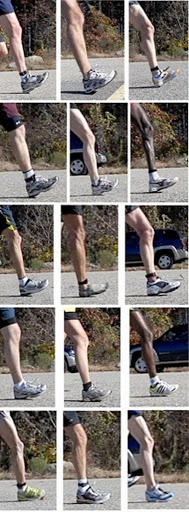
Over the past few days I’ve been reading my way through the June 2013 issue of Footwear Science (sure to be found on a newsstand near you!). The issue is a compilation of presentation abstracts from the annual meeting of the Footwear Biomechanics Group that was recently held in Brazil. To be honest, I eat this stuff up, and this is probably the first periodical I’ll have gone through cover-to-cover in a few years. There are a ton of interesting studies in the issue (I hope to write about several of them), and one that I found particularly fascinating was titled “Initial foot contact patterns during steady state shod running.”
In the study, a group from Belgium led by Bastiaan Breine set out to examine foot strike patterns among runners using a novel measuring device. What they did was place a pressure sensing plate on top of a force plate so that both underfoot pressure tracings and force application could be recorded simultaneously.
Traditionally, foot strikes have been classified either visually (point of first contact between foot/shoe and ground) or by using a method known as the Strike Index. With the Strike Index, footstrike is classified by the location of initial contact as determined by center of pressure tracings under the foot. Using the this method, initial contact (IC) under the rear one-third of the foot would be classified as a heel strike, IC under the middle one-third would be classified as a midfoot strike, and IC under the anterior one-third would be a forefoot strike (which in my opinion is problematic since this requires a very anteriorly placed initial contact to score a forefoot strike).
The authors of this study observe that although pressure tracings might be recorded at initial contact, the actual forces at work might be very small and functionally irrelevant. So, in addition to scoring foot strikes by location of initial contact as determined by pressure tracings, they decided to also score foot strikes based on the location of maximal impact loading rate (impact loading rate is the rate of force application and is typically expressed in units of body weights/second). Max loading rate is functionally meaningful in that higher max loading rates have been linked to increased risk of injuries like stress fractures.
So what did they find? Using Strike Index only they found that 45 out of 55 runners were rearfoot strikers and the remaining 10 were midfoot strikers (same pattern on both feet). However, when they used the location of the instant of maximal loading rate to classify foot strikes they found that:
1) On the left foot, 11 of the 45 heel strikers were actually midfoot loaders, and 1 midfoot striker was a forefoot loader.
2) On the right foot, 13 of the 45 heel strikers were actually midfoot loaders, and apparently 2 heel strikers were forefoot loaders.
Below is a reproduction of their figure showing what the underfoot pressure tracings for the various strike patterns look like:
What you’ll note from the above diagram is that the blue and red tracings both originate on the rear, outer portion of the heel indicating initial heel contact. However, things differ from that point on. The blue line moves quickly forward along the outer margin of the shoe and peak impact loading rate actually occurs under the midfoot. The red line veers inward a bit and peak loading rate is squarely in the center of the heel. So, although the initial contact pattern is similar (both are “heel strikers”), the actual loading pattern is very different. The authors feel that those exhibiting a pattern like the blue line should not be considered heel strikers. If the proportions in their sample are reflective of the frequency with which these patterns might be found in the broader running population, it might mean that as many as 25-33% of “heel strikers” don’t actually load much at all under their heels!
My personal interest in this study is that I’m pretty sure that my foot strike tracing would be in the blue-line category, or somewhere between blue and green. I’m a mild heel striker if you look at me on film in most shoes, but when I was running on the force treadmill at Saucony HQ I was told by biomechanist Spencer White that I loaded under the midfoot. This would also seem to explain to me why my wear patterns nowadays originate at outside of the heel and extend forward along the lateral edge, whereas I used to absolutely destroy just the back-most corner of my heels. I suspect when I went through my running form experimentation phase a few summers ago I shifted my tracing from red to blue, and in some shoes (and barefoot) to green. I’m beginning to also wonder if this might explain why I’m so sensitive to heel-forefoot drop in running shoes – given my mild heel strike it seems to not take very much additional material under the heel to start messing with my stride. It would be very interesting to take this group of pseudo-heel strikers and examine how their stride changes with varying shoe properties.
Perhaps the biggest issue that this study might bring up is that any other studies that have compared heel strikers to midfoot or forefoot strikers may not have actually been comparing what they thought they were comparing – it really depends on how the heel strike was classified. If it was done by video or by Strike Index alone there may have been some midfoot loaders in the heel strike group…
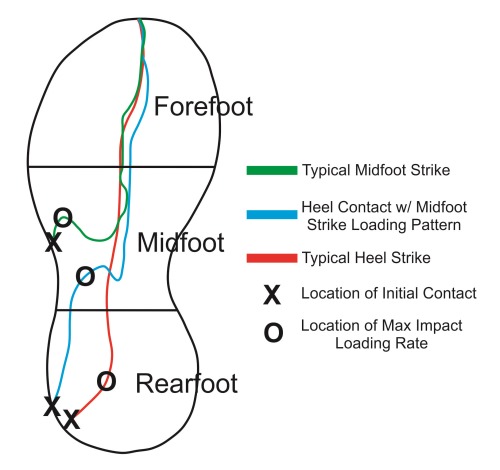
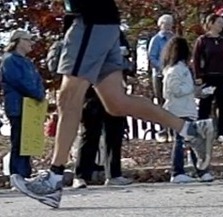

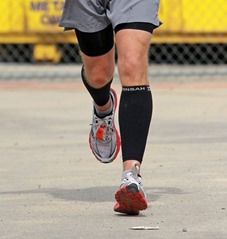
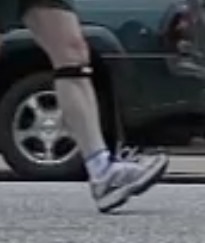














i think that would make you more of a heel contact runner right?
Contact with the heel but loading with the mid foot?
i don’t think i’d necessarily classify that as a heel strike considering it’s just a glancing point of contact with your heel…
Yeah, this seems to be putting some science behind the heel contact/heel strike distinction.
—-
Pete Larson’s Web Links:
-My book: Tread Lightly: link to ow.ly
-Blog: https://runblogger.com
-Twitter: link to twitter.com
-Facebook Page: link to facebook.com…
-Discussion Forum: https://runblogger.com/forum
i’m glad, i’m getting tired of generalizations involved with things that are completely different, even if they’re small differences, they’re still huge
I always disliked the focus on “strike”. I never had the term for the alternative (I like “loading”). I always said my heel sometimes touches the ground first but I’m always on my midfoot by the time my foot is supporting my weight. To me, it just made sense that there is a big difference between those who jam their heels into the ground and those who may touch the ground first with their heels but are more flat footed when their weight is actually being supported. It’s good to see science backing this idea up.
I agree, I like to have the data.
Sent from my iPad
I have had patients attempt footwear changes, gait modifications and all sorts of trend changes in my years of practice. My take is that if no injuries are occurring, change nothing. If injuries are occurring, then it is almost always a product of training protocols. Footwear and foot plant make much less of an impact. (unless grossly abnormal or deformed.) Embrace your heel strike Pete.
I’m not too worried about my own foot strike any more, but as an academic question variation in foot strike fascinates me.
Sent from my iPad
Is it possible that those who strike and load on the heel have a slower than optimal cadence? Could having a higher turnover make the transition from heel strike to midfoot loading happen smoother? It seems to me that a slower cadence would naturally be more jarring.
There is so much focus on footstrike. What about a comparison of arm carriage and posture among different levels of runners? It would also be interesting to know who seems to be very economical and combines all of the elements of good running form (proper posture, good arm carriage, optimal cadence, midfoot loading). Shouldn’t the whole system work together? Who does this the best?
I’ll add another category to the list of good form elements. How about apparent relaxation/seemingly low effort. Don’t really good runners seem to have a generally relaxed, supple quality to their bodies?
I think relaxing is a good rule of thumb as well, I see a lot of runners who hold a lot of tension in their face, neck, and shoulders.
Sent from my iPad
I think it’s a reasonable hypothesis that a harder heel strike is paired with a lower cadence, would be interesting to look for that correlation. As for arm carry and posture, I did write something on that in elites a few years ago link to runblogger.com…
Sent from my iPad
I’m liking this study, thanks for sharing Pete.
I too used to destroy just the back corner of my shoes and subsequently went through a form overhaul. It always seemed like the heel on high-drop shoes was getting in the way, so now I can’t stand running in anything more than a 3-4mm drop.
Exactly how I feel!
—-
Pete Larson’s Web Links:
-My book: Tread Lightly: link to ow.ly
-Blog: https://runblogger.com
-Twitter: link to twitter.com
-Facebook Page: link to facebook.com…
-Discussion Forum: https://runblogger.com/forum
Those Footwear Science articles look really interesting, so I signed up for an account. Turns out it costs $180 for access to the issue, or $44 per article. Ouchie!
Yeah, academic journal pricing is crazy. I joined the Footwear Biomechanics Group and paper copies of the journal come along with membership :) Still expensive though…
—-
Pete Larson’s Web Links:
-My book: Tread Lightly: link to ow.ly
-Blog: https://runblogger.com
-Twitter: link to twitter.com
-Facebook Page: link to facebook.com…
-Discussion Forum: https://runblogger.com/forum
The rubbers of the outer side of the heel, the outer side of the midfoot and the middle of the ball of the forefoot of all my retired shoes are all gone. But the rubbers of the inner side of the heel, the inner side of the midfoot and the inner side of the forefoot of the same shoes are still in excellent condition (almost no sign or no sign of abrasion ). I never understand why running shoes companies still add rubbers in these locations. I prefer they distribute those rubbers to the high contact areas (make the rubbers thicker).
Here’s the shoe they used in the study: link to li-ning.com.cn… I wonder how the data would have been any different with a less-cushioned shoe. I think we learn more about mechanics and form when the participant is wearing minimal or no shoes than when the participant is wearing padded shoes or shoes with a large heel (as in the photos above). And Tim, some injuries take years to develop; I’d rather someone try to be proactive about my stride than wait until I’m hurting, right?
Problem with that is studies like this rarely give the subjects time to adapt to a more minimal shoe so what winds up happening is they use their old form in a more minimal shoe and the loading looks much worse. This is then interpreted as minimal shoe being dangerous when the reality is we haven’t considered that some adaptation is required…
Sent from my iPad
late to the conversation, but this makes a lot of sense as I review my wear pattens… so thanks. (Some pics here of my wear patterns link to tobit.emmens.co.uk… ) I am convinced I am mid foot striking, I am hitting a cadence of 180-190, have no knee pain or other pains I used to experience yet when I look at my soles, I am wearing the outside edge of my heals!
I guess I am somewhere around the blue line, but when i really work on form, I guess I might be nearer the green one.
I have one questions, is hitting the blue line actually ok? or do I just need to work harder and to become a proper mid-foot striker?
cheers
I’d tell you that if everything else is good with your form, don’t worry too much about where exactly your foot hits. My wear pattern tends toward the heel, but I don’t generally get injured, my comfortable cadence is about 182-185, and I don’t overstride so I just let my foot do what it wants.
—-
Pete Larson’s Web Links:
-Performance Health Spine and Sport Therapy<http: about-us=”” dr-peter-larson=”” performancehealthnh.com=””>
-My book: Tread Lightly: link to ow.ly
-Blog: https://runblogger.com
-Twitter: link to twitter.com
-Facebook Page: link to facebook.com…
-Discussion Forum: https://runblogger.com/forum</http:>
thanks! yes, keeping relaxed and comfortable is key!
Great study. What where the height drops in the shoes?
I think the reason for this pseudo heel strike is the height drop in the shoes. As I understand the foot tries to land on mid-foot and the heel gets in the way touching the ground first. So whats the point in the raised heel then? If you need high cushioning you can always go to a zero drop Hoka shoe and have both performance and comfort.
Hi Dr. Larson,
May I use your article as a reference in a book I’m writing about the physics, biomechanics and physiology of the 3-turn hammer throwing technique of Yuri Sedykh? I have sections about foot strike. Yuri had a heel strike in his earlier throwing and was told to change to a forefoot strike after 1977.
Thanks,
Carl Shields